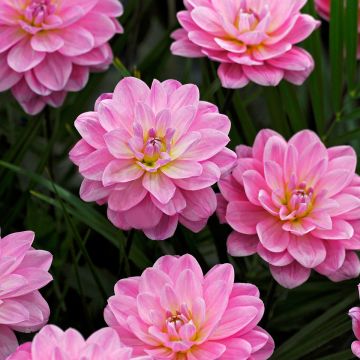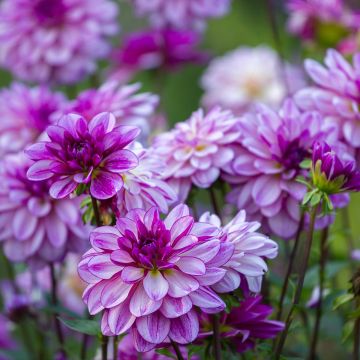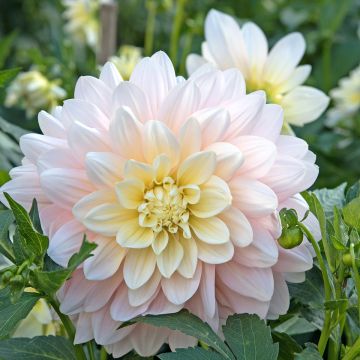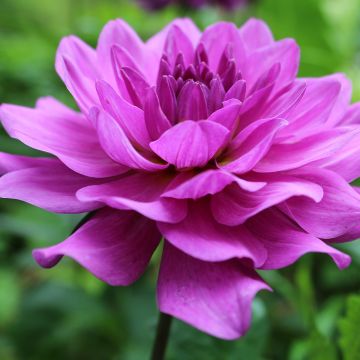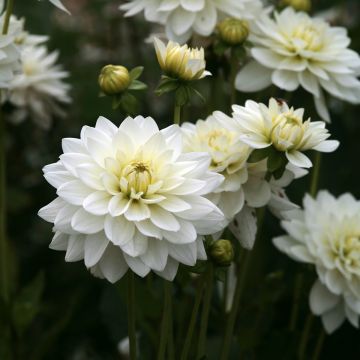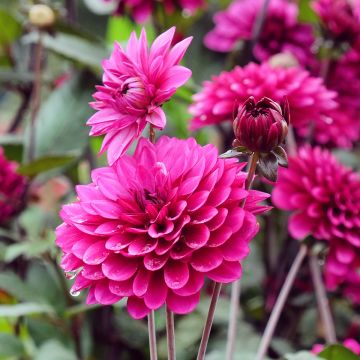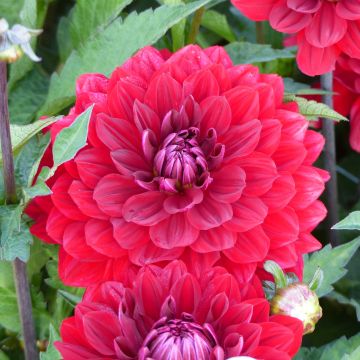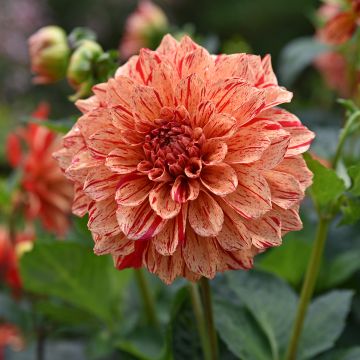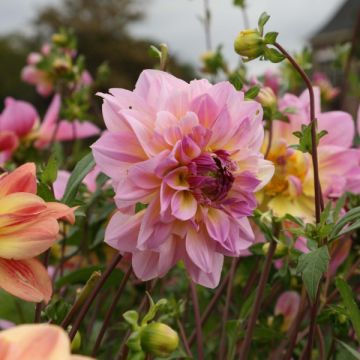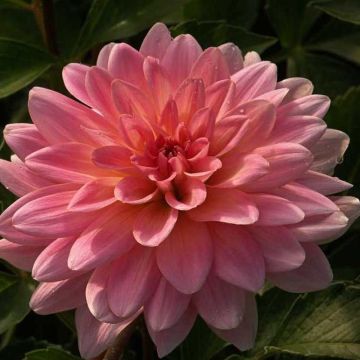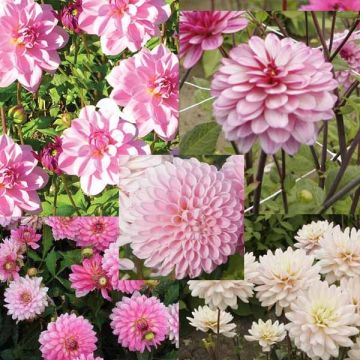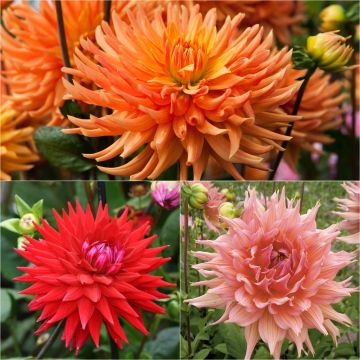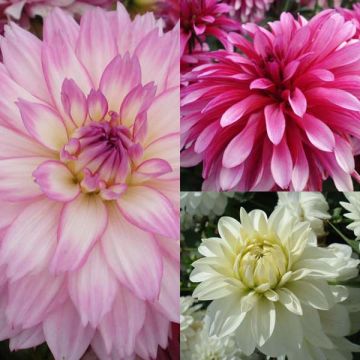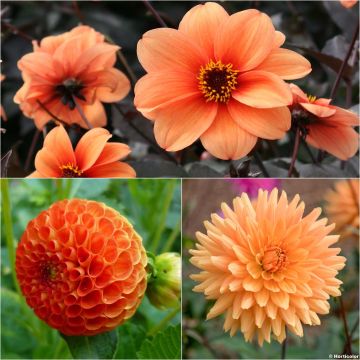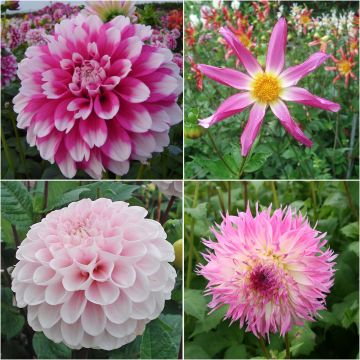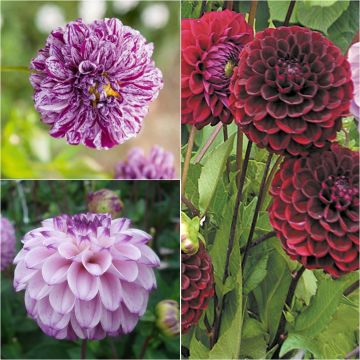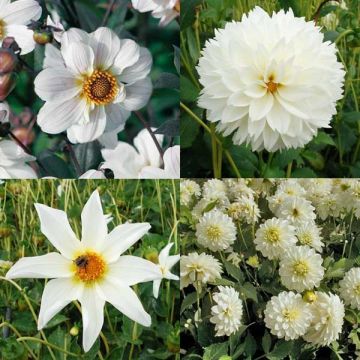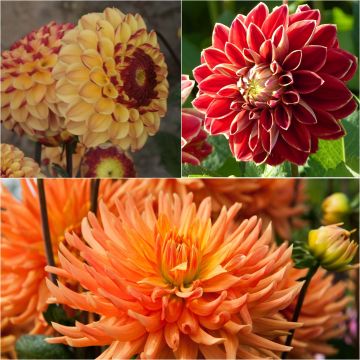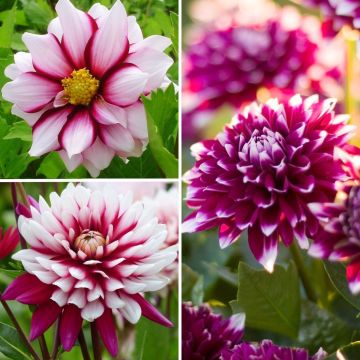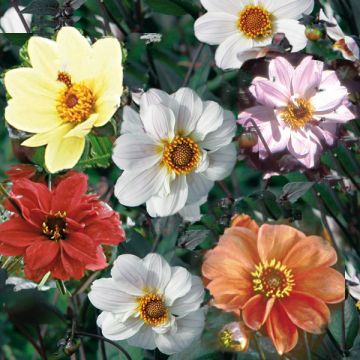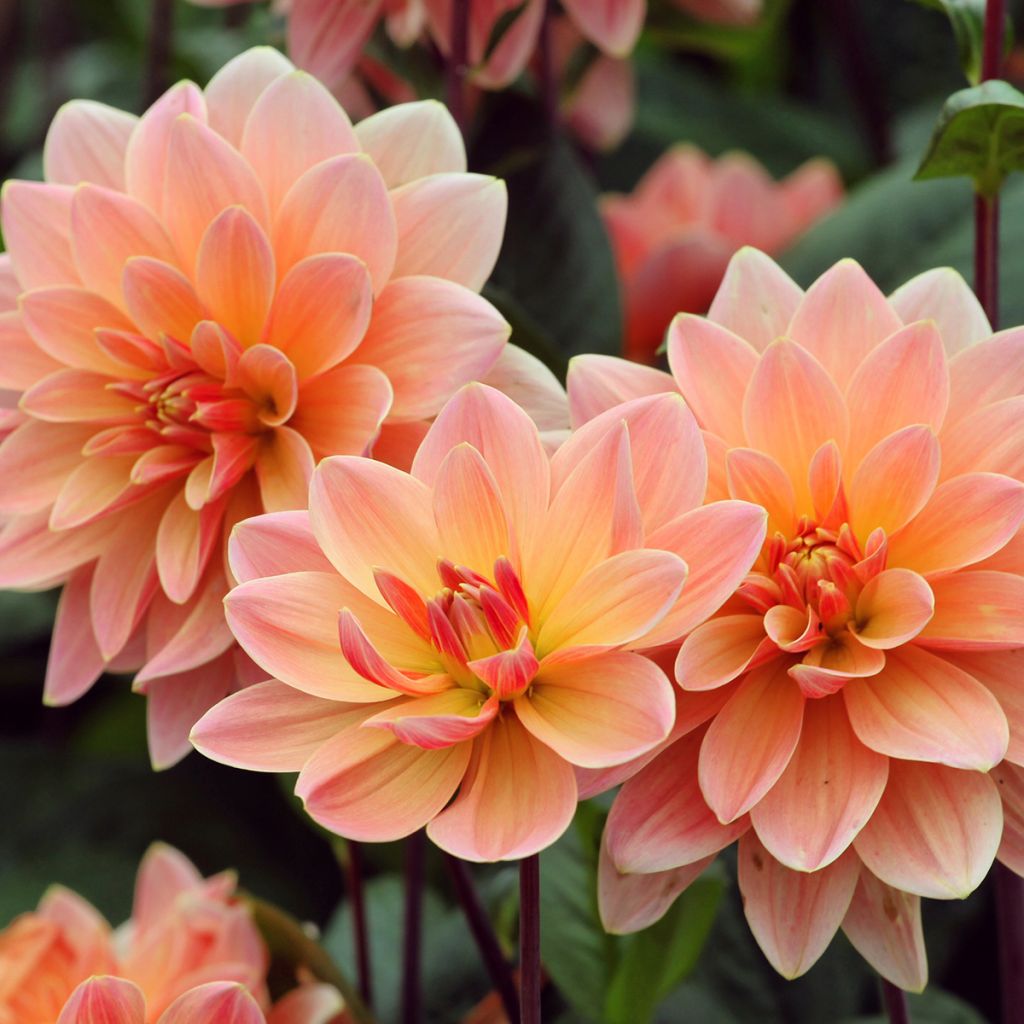

Dahlia Yvonne
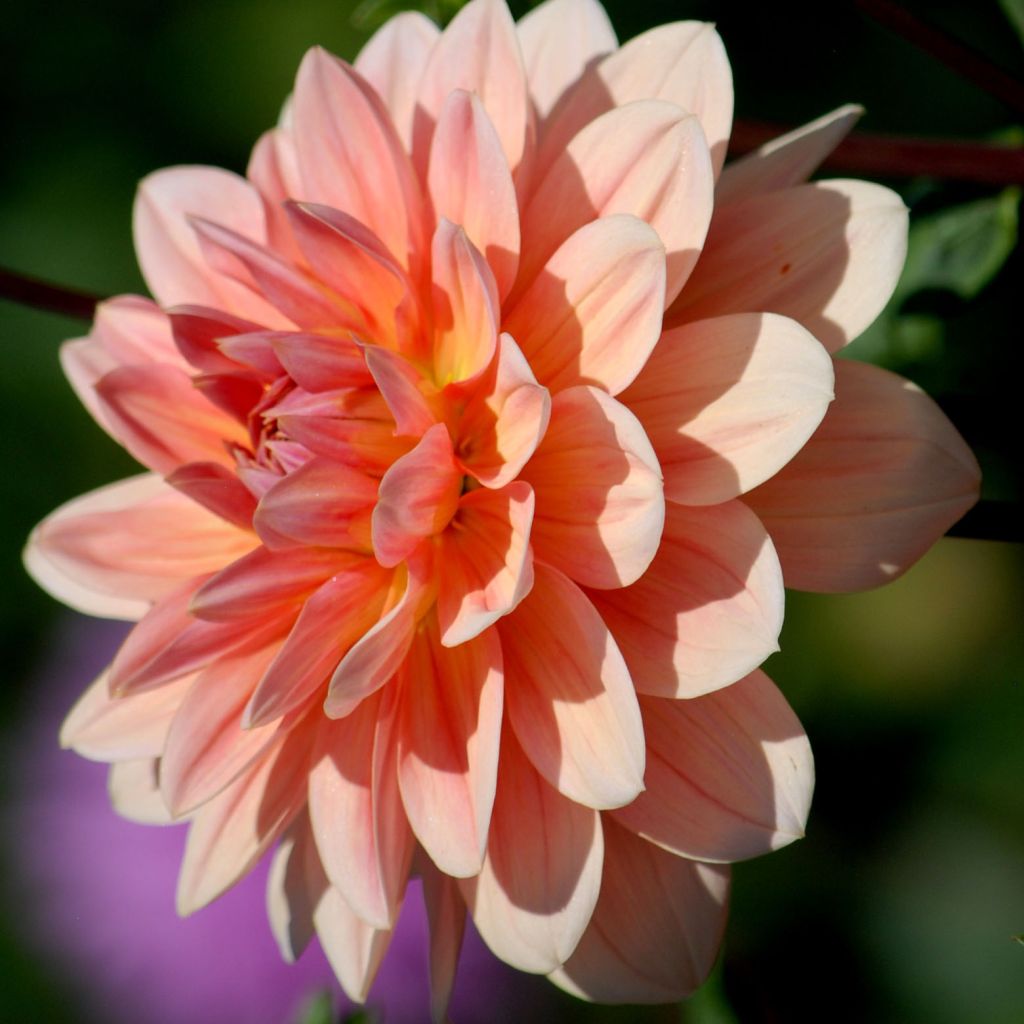

Dahlia Yvonne
Dahlia Yvonne
Dahlia Yvonne
Dahlia
Healthy tubers of beautiful sizes. Waiting for a recovery (or not?).
Nath, 05/02/2024
Order in the next for dispatch today!
Dispatch by letter from €3.90.
Delivery charge from €5.90 Oversize package delivery charge from €6.90.
More information
This item is not available in your country.
Schedule delivery date,
and select date in basket
This plant carries a 6 months recovery warranty
More information
We guarantee the quality of our plants for a full growing cycle, and will replace at our expense any plant that fails to recover under normal climatic and planting conditions.
From €5.90 for pickup delivery and €6.90 for home delivery
Express home delivery from €8.90.

Does this plant fit my garden?
Set up your Plantfit profile →
Description
The 'Yvonne' camellia-flowered Dahlia is a vigorous variety, quite rare in cultivation, offering adorable double flowers full of freshness. Of medium size, slightly flattened, they resemble waterlilies. Their colour is a very fresh medium pink in the centre, with the peripheral petals being lighter and tinted with salmon pink. This dahlia with its beautiful dark green-grey foliage has a long summer flowering period, overflowing with charm until the first frost, perfect for adding a romantic and feminine touch to borders or in bouquets.
Dahlias belong to the large family of Asteraceae, originally from the high plateaus of Mexico. Currently, the approximately 25,000 horticultural varieties obtained by humans have arrived, to our greatest pleasure, in gardens worldwide. Varieties of Dahlias are classified according to the shape of their heads. 'Yvonne' is a Dahlia from the decorative group with camellia-like flowers. The terminal inflorescences, called heads, are carried by dark stems. They are composed of several rows of almost flat outer ligules, slightly curled. The heads are regular and generally measure 8 to 9 cm (3 to 4in) in diameter. The outermost ligules are more or less pale pink to soft salmon pink, while those in the centre are a brighter, more vibrant pink. The small yellow centre of the flowers only appears late, just before fading. The plant will easily reach a height of more than 1.20 m (4ft) and a width of 60 cm (24in). It has an erect habit, and its tall stems often require staking. Its beautiful dark green leaves are divided into finely toothed lobes. The particularly long flowering period of this variety begins in July and ends in October-November, if care is taken to remove faded flowers or frequently make bouquets.
Today, essential in gardens, whether ornamental or even in vegetable gardens, Dahlias were initially cultivated in Mexico as a root vegetable. Their poor taste qualities quickly relegated them to the status of ornamental plants, but they are still welcome in vegetable gardens to add a splash of color amidst the vegetables. 'Yvonne' is a tall plant that can be used to structure elevated borders, and can be paired with purple foliage, for example (Cotinus Royal Purple, Physocarpus 'Red Baron', Sambucus nigra 'Black Lace'). It particularly goes well with blue, plum, or even chocolate-coloured flowers.
Report an error about the product description
Dahlia Yvonne in pictures


Plant habit
Flowering
Foliage
Botanical data
Dahlia
Yvonne
Asteraceae
Dahlia
Cultivar or hybrid
Other Camellia Dahlia
Planting and care
Dahlia 'Yvonne' is easy to grow in all regions. For a generous flowering, it is good to follow a few simple rules. Plant the tubers in full sun as soon as the last frost is over. Rich, damp, and well-drained soil is perfect. However, waterlogging would promote tuber rot. Feel free to amend the soil with compost and sand if necessary. Work the soil deeply and enrich it, for example, with bonemeal. Place your tuber and crumble the soil well to fill without air pockets. Your dahlia should be covered with about 6 cm (2in) of soil. At the end of planting, water generously once and then regularly repeat this watering during the first 6 weeks to help with rooting.
Dahlias are sensitive to cold, so they need to be overwintered. In November, the first frost blackens the foliage, which is the time to dig them up. Carefully remove the tubers, removing as much soil as possible. Let the foliage dry so that the tubers can replenish their reserves. Then cut the stems to 10 cm (4in). Spread your bulbs in a box on newspaper. Store them in a frost-free, dry, cool, and dark place, such as a frost-free garage or attic, for example. In warmer regions, or areas close to the coast, where there are few frosty days per year, it is possible to leave them in place. In this case, simply cover the ground with a carpet of leaves or straw for protection.
This tall Dahlia, with its hollow stems, does not withstand wind or heavy rain well. To overcome this inconvenience, you can stake it, but let's agree, it's not very aesthetic. On the other hand, by pinching the stems early or removing the axial flower buds, you will spread out the habit of the plant, which will offer more resistance to bad weather. At the same time, you channel the flow of sap to a single flower that will become larger and stronger.
Planting period
Intended location
Care
-
, onOrder confirmed
Reply from on Promesse de fleurs
Dahlias
Haven't found what you were looking for?
Hardiness is the lowest winter temperature a plant can endure without suffering serious damage or even dying. However, hardiness is affected by location (a sheltered area, such as a patio), protection (winter cover) and soil type (hardiness is improved by well-drained soil).

Photo Sharing Terms & Conditions
In order to encourage gardeners to interact and share their experiences, Promesse de fleurs offers various media enabling content to be uploaded onto its Site - in particular via the ‘Photo sharing’ module.
The User agrees to refrain from:
- Posting any content that is illegal, prejudicial, insulting, racist, inciteful to hatred, revisionist, contrary to public decency, that infringes on privacy or on the privacy rights of third parties, in particular the publicity rights of persons and goods, intellectual property rights, or the right to privacy.
- Submitting content on behalf of a third party;
- Impersonate the identity of a third party and/or publish any personal information about a third party;
In general, the User undertakes to refrain from any unethical behaviour.
All Content (in particular text, comments, files, images, photos, videos, creative works, etc.), which may be subject to property or intellectual property rights, image or other private rights, shall remain the property of the User, subject to the limited rights granted by the terms of the licence granted by Promesse de fleurs as stated below. Users are at liberty to publish or not to publish such Content on the Site, notably via the ‘Photo Sharing’ facility, and accept that this Content shall be made public and freely accessible, notably on the Internet.
Users further acknowledge, undertake to have ,and guarantee that they hold all necessary rights and permissions to publish such material on the Site, in particular with regard to the legislation in force pertaining to any privacy, property, intellectual property, image, or contractual rights, or rights of any other nature. By publishing such Content on the Site, Users acknowledge accepting full liability as publishers of the Content within the meaning of the law, and grant Promesse de fleurs, free of charge, an inclusive, worldwide licence for the said Content for the entire duration of its publication, including all reproduction, representation, up/downloading, displaying, performing, transmission, and storage rights.
Users also grant permission for their name to be linked to the Content and accept that this link may not always be made available.
By engaging in posting material, Users consent to their Content becoming automatically accessible on the Internet, in particular on other sites and/or blogs and/or web pages of the Promesse de fleurs site, including in particular social pages and the Promesse de fleurs catalogue.
Users may secure the removal of entrusted content free of charge by issuing a simple request via our contact form.
The flowering period indicated on our website applies to countries and regions located in USDA zone 8 (France, the United Kingdom, Ireland, the Netherlands, etc.)
It will vary according to where you live:
- In zones 9 to 10 (Italy, Spain, Greece, etc.), flowering will occur about 2 to 4 weeks earlier.
- In zones 6 to 7 (Germany, Poland, Slovenia, and lower mountainous regions), flowering will be delayed by 2 to 3 weeks.
- In zone 5 (Central Europe, Scandinavia), blooming will be delayed by 3 to 5 weeks.
In temperate climates, pruning of spring-flowering shrubs (forsythia, spireas, etc.) should be done just after flowering.
Pruning of summer-flowering shrubs (Indian Lilac, Perovskia, etc.) can be done in winter or spring.
In cold regions as well as with frost-sensitive plants, avoid pruning too early when severe frosts may still occur.
The planting period indicated on our website applies to countries and regions located in USDA zone 8 (France, United Kingdom, Ireland, Netherlands).
It will vary according to where you live:
- In Mediterranean zones (Marseille, Madrid, Milan, etc.), autumn and winter are the best planting periods.
- In continental zones (Strasbourg, Munich, Vienna, etc.), delay planting by 2 to 3 weeks in spring and bring it forward by 2 to 4 weeks in autumn.
- In mountainous regions (the Alps, Pyrenees, Carpathians, etc.), it is best to plant in late spring (May-June) or late summer (August-September).
The harvesting period indicated on our website applies to countries and regions in USDA zone 8 (France, England, Ireland, the Netherlands).
In colder areas (Scandinavia, Poland, Austria...) fruit and vegetable harvests are likely to be delayed by 3-4 weeks.
In warmer areas (Italy, Spain, Greece, etc.), harvesting will probably take place earlier, depending on weather conditions.
The sowing periods indicated on our website apply to countries and regions within USDA Zone 8 (France, UK, Ireland, Netherlands).
In colder areas (Scandinavia, Poland, Austria...), delay any outdoor sowing by 3-4 weeks, or sow under glass.
In warmer climes (Italy, Spain, Greece, etc.), bring outdoor sowing forward by a few weeks.


































